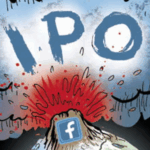Here’s today’s AdExchanger.com news round-up… Want it by email? Sign-up here.
 The TV Upfront Show Turning To Exchanges?
The TV Upfront Show Turning To Exchanges?
The heavily-publicized TV upfront “show” is winding down according to Anthony Crupi of MediaWeek and media chiefs are P.O.’d. Quoting an unnamed ad boss at a media company, presumably a network, the agencies were working hard to knock down prices a full 10% on behalf of their advertiser clients and “they did everything they could to turn the upfront into some kind of half-assed silent auction.” Ahhhh – now we’re getting somewhere. Traditional meet the digital auction of the future where upfronts are auctioned on a futures exchange using the overlay of data combined with a liquid marketplace and unlocking true value in advertising.
Financial Times on Display Ad Exchanges
Excitement over the potential of ad exchanges and buying platforms is not a U.S.-only phenomenon. Kevin Allison of FT.com provides a good overview on the momentum and players in the display ad exchange space such as DoubleClick, Right Media Exchange and UK-based, AdJug. More on the UK space from media agency, Infectious Digital Media, tomorrow on AdExchanger.com.
Mistrust Abounds For Display
A new article published today by eMarketer shows that display advertising has an image problem.
Citing a Nielsen study from last month, display ads are near the bottom in terms of what people trust. Looking for the bright side? Well… mobile text ads are the most loathed of all.
Time’s Ad Network
In an article from Folio, Stephanie George, President of Advertising Sales and Marketing at Time Inc. discusses the Company’s ad network strategy called “Axcess” which was launched in April. George reads from the vertical ad network “Bible” in describing the Axcess advantage as she states, “The difference is, unlike a [third-party] ad network, you know where you are and you know who your audience is.” According to the article, the Time ad network reaches 26 million monthly unique across 26 Web sites.
Behavioral Frustration
A battle is brewing for this fall as changes in online behavioral advertising practicies loom – especially after you read Douglas MacMilla’s feature in the latest issue of BusinessWeek about Federal Trade Commission Chairman, Jon Leibowitz, who “keeps a framed image of Arnold Schwarzenegger from the 1984 film The Terminator.” Known for aggressively pursuing spyware companies and other cases of compromised data security, Leibowitz is ready to bring down the anvil on those he perceives as stealing from the consumer.
In recent weeks, Leibowitz has met with Rep.Rick Boucher (D-Va.), who is leading the charge on a bill which will require marketers to ask before they cookie a user. Boucher’s new bill is expect to hit Congress in September. Leibowitz says he supports Boucher’s plans and emphatically states to BusinessWeek, “We want to work with him, and I think he’s exactly on the right track.”
Coremetrics Chief on Attribution
Speaking with eConsultancy’s LInus Gregoriadis, John Squire, Chief Strategy Officer at web analytics vendor Coremetrics, suggests that his analytics company is focused on providing cross-digital, attribution for its clients as a differentiator in the analytics space. Squire tells eConsultancy:
“Businesses can also augment this data with offline information from point-of-sales, catalogues and call centres, and even attitudinal research, to better understand their target audience and allocate their marketing budget.”
Perhaps easier said than done. Cross-channel attribution – which includes traditional and in-store data in addition to digital channels – appears to continue to be a huge challenge from here.
Donovan In DART
Last week, Donovan Data System (DDS) released an update to its iDesk platform and MediaPost’s Joe Mandese covers the implications for DoubleClick and it’s DART product line. With the billing and paying integrated into the ad campaign management of DART, workflow should become more efficient. (DDS release here) Thus far, only AMS Media in the UK has the new system with rollout set for the U.S. in 6 months according to Mandese.
MDC Partners Profiting
MDC Partners released quarterly earnings late last week and showed a profitable quarter that surpassed Wall Street expectations. Jim Edwards at Bnet was a bit more skeptical than the Street noting, among other things, that CEO Miles Nadal is, “getting further away from his goal of growing revenues 1-3 percent in 2009” which Nadal referenced after Q4 2008 earnings were reported. (PDF)
More MDC: The Economist covers how MDC Partners and MDC agency, Kirshenbaum Bond + Partners (KBP), are its expanding its offering and speaking to new advertiser needs with Varick Media Management.
Web Ads Meet Politics; Politics, Web Ads
Politicians are getting in trouble with web ads as politicos need more room for disclosure according to today’s article from Emily Steel of The Wall Street Journal. You know that last second in a political ad on TV which contains a mountain of disclosure? In Florida, that’s going to need to be in the display ad banner, too – not just the site to which it links. As Steel notes, political campaign digital spend is microsopic and cites a Borrell Associates report that of the “$4.8 billion spent on political advertising in 2008, online media accounted for just $20 million.” Emarketer breaks 2008 online political spend out as follows:
- Banner Ads – 49%
- Search Ads – 26%
- Streaming Audio and Video – 24%
- Email – 2%
Targeting Locally With Display
On Search Engine Land, John Keister, President of Marchex, an local search/performance marketing company, says that in order to get local biz, “The best approach for the big display networks may be to offer the bulk of their display inventory as a performance-based product for local businesses.” He reasons that given local business owners’ need to directly tie a conversion to an online ad buy, the only way “local” is going to go “display” is if you let them buy using a CPA model. As we’ve said before, the demand creation opportunity is a tougher, longer slog than the demand fulfillment of search. If local advertisers are to succeed in display, they will likely need better attribution models and analytics to show display’s benefits.
In the meantime, local advertisers can geo-target precisely with frequency capping and, hopefully, an audience target overlay as well as use in-banner eCommerce products like ShopAds from Adgregate Markets (AdExchanger.com Q&A) which brings the transaction to the display ad thereby compressing the purchase funnel.
Mobile Ad Network Daily Double
Jumptap issued a release today about its Nielsen numbers which showed, “The Jumptap Premium Mobile Ad Network now reaches a unique audience of over 22 million – 42% of all US Mobile Web Users.” More good news from the release says that “Campaigns booked in the first half of 2009 have already more than doubled bookings for 2008, and Jumptap expects an additional 200 percent increase in Q3 and Q4.”
More Ad Network Consolidation
 Digital Media in Australia covers the acquisition of Australian ad network/marketing company, Max Interactive, by Ybrant Digital, owners of AdDynamix, Oridian, MediosOne, dream ad, VoloMP and AMS. Ybrant Digital CEO Suresh Reddy says: “While this acquisition marks our entry into APAC market, more significantly, Max will be our first sales group that has successfully sold banners, search key words and emails together in any one market.
Digital Media in Australia covers the acquisition of Australian ad network/marketing company, Max Interactive, by Ybrant Digital, owners of AdDynamix, Oridian, MediosOne, dream ad, VoloMP and AMS. Ybrant Digital CEO Suresh Reddy says: “While this acquisition marks our entry into APAC market, more significantly, Max will be our first sales group that has successfully sold banners, search key words and emails together in any one market.
Eric Schmidt Leaves Apple Board, Takes Ipod With Him
Finally, in today’s big tech news, Eric Schmidt has left the Apple board as competitive pressure between Google and Apple has built up to this decision. The Apple release references the new Google OS, Chrome, and Android – Big G’s answer to the iPhone.
Special Offer from Search Engine Strategies: Get 20% off admission to the next week’s San Jose conference by using the discount code “ADEX20.”













